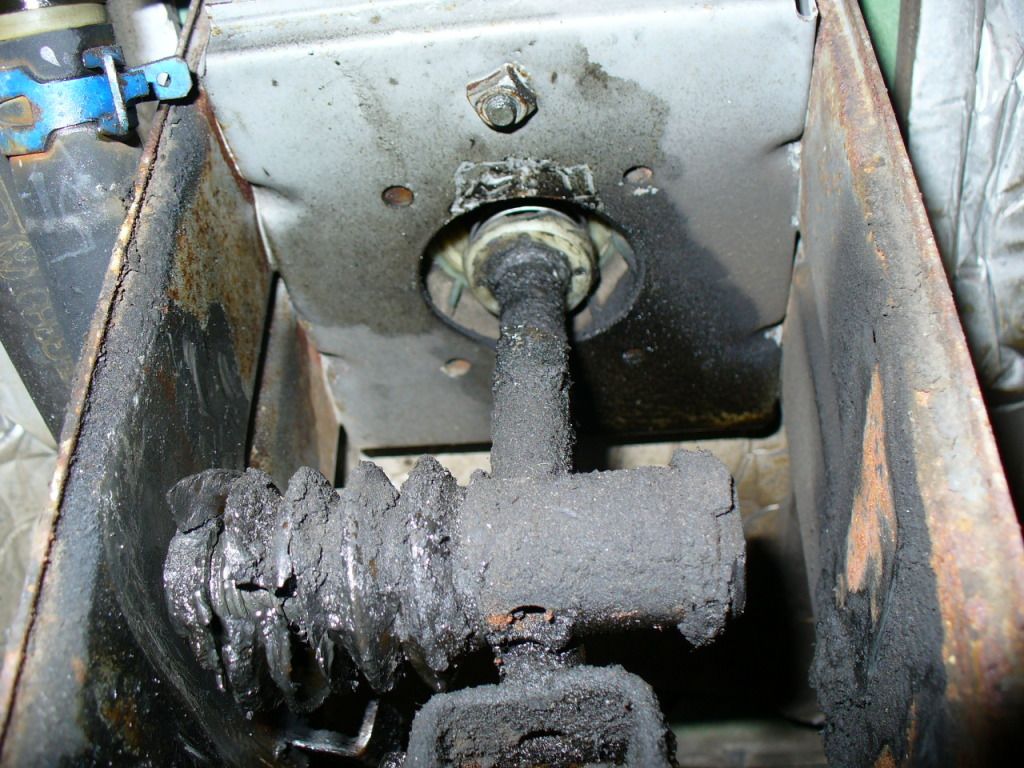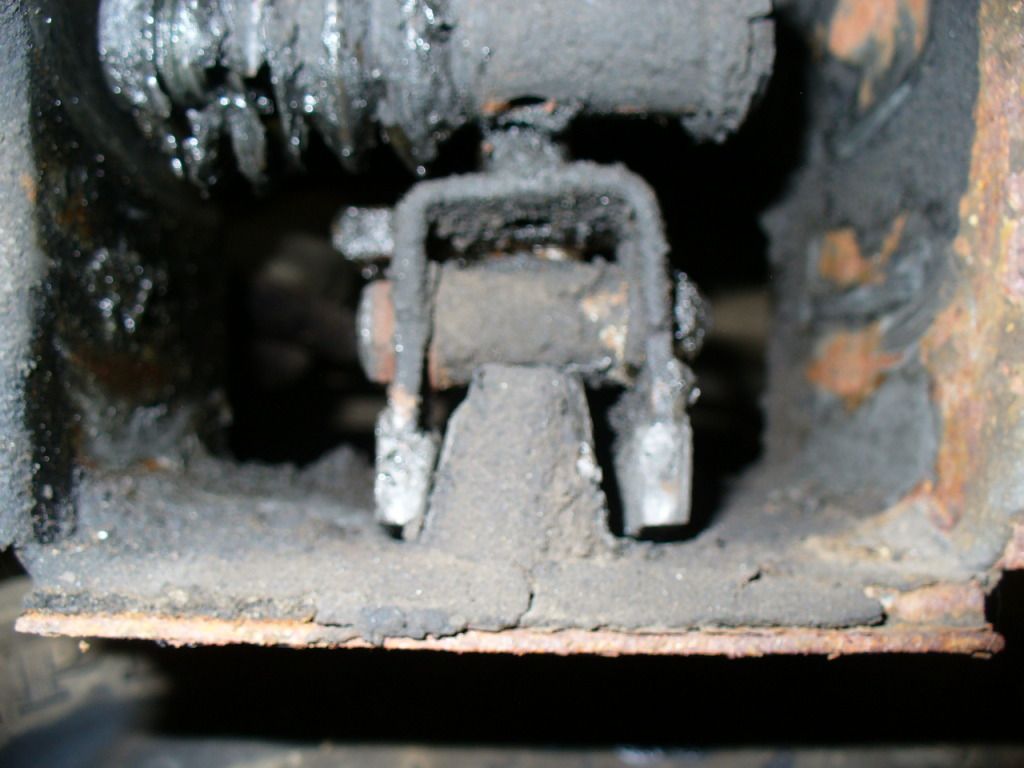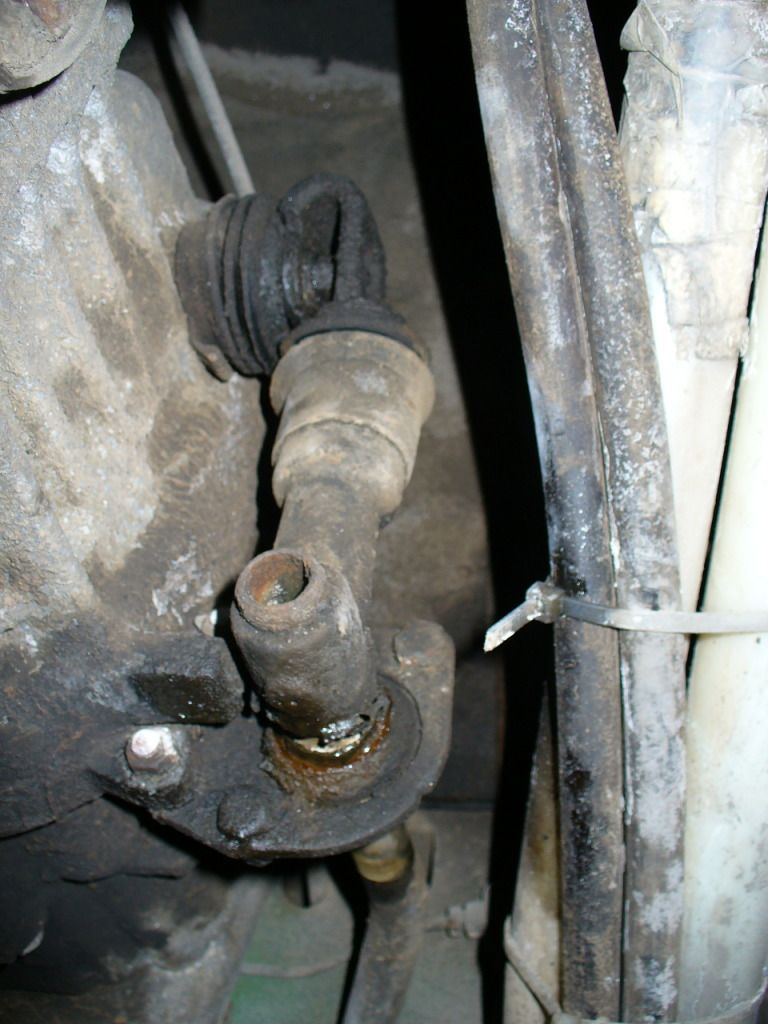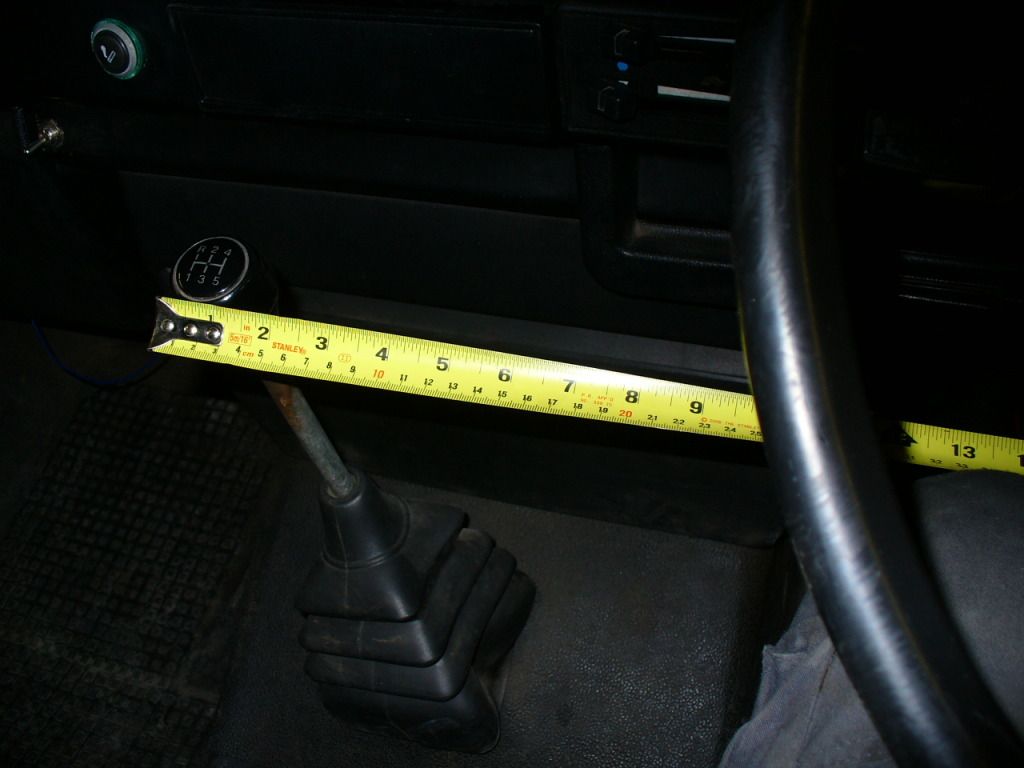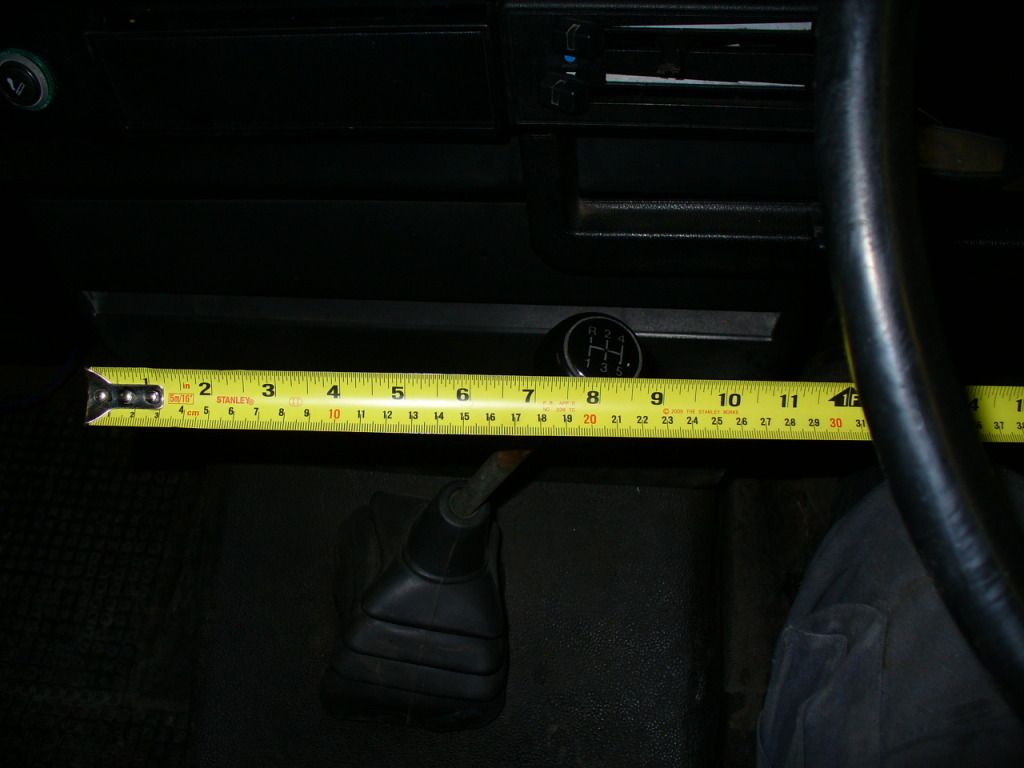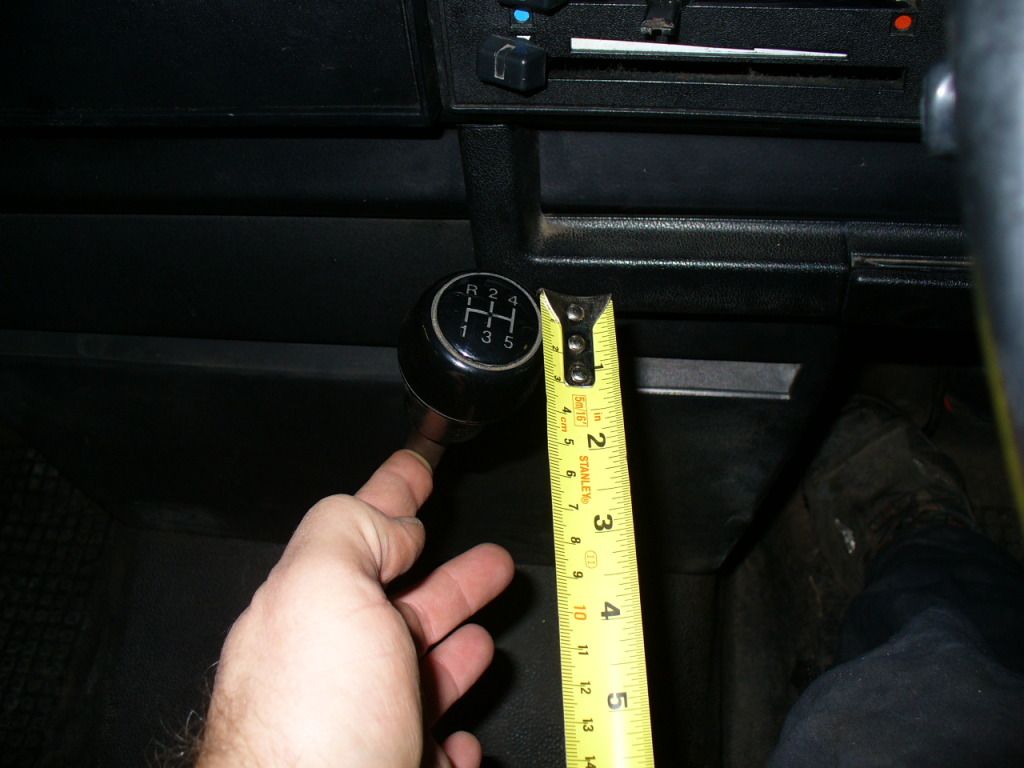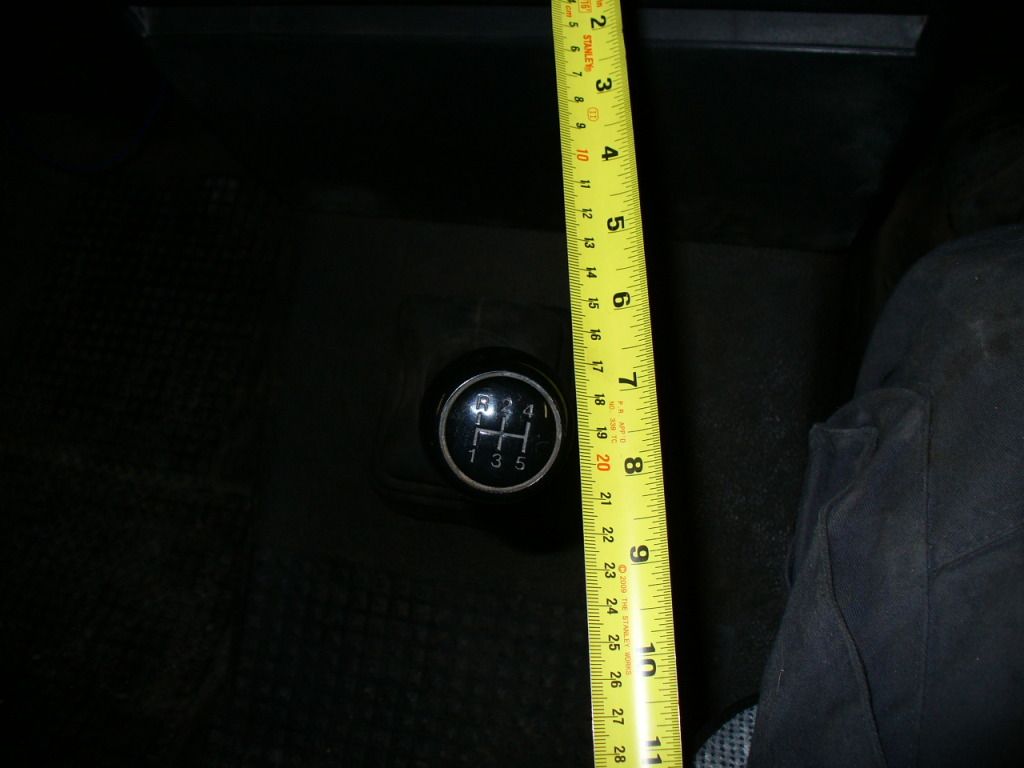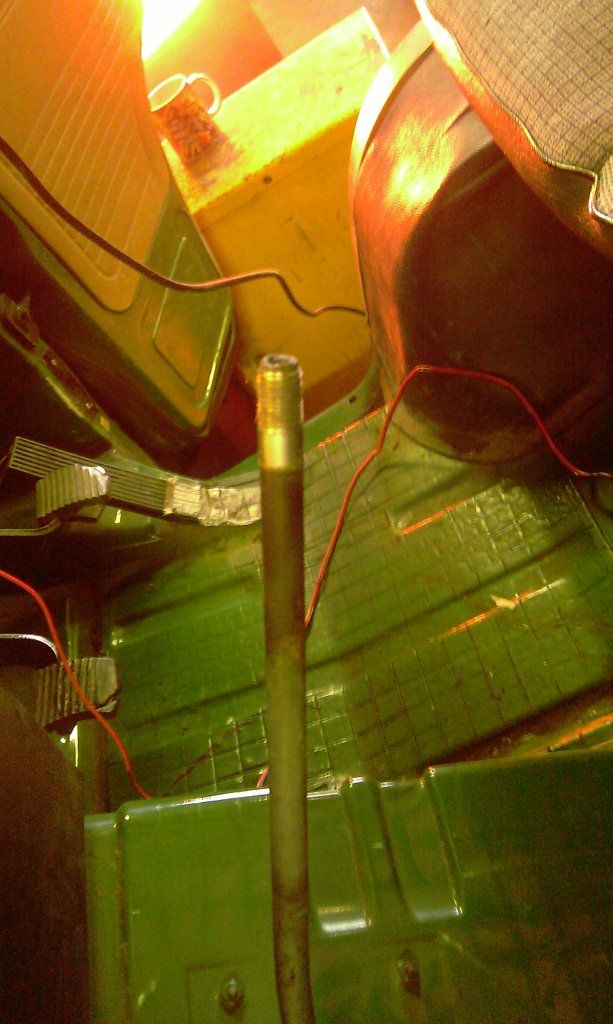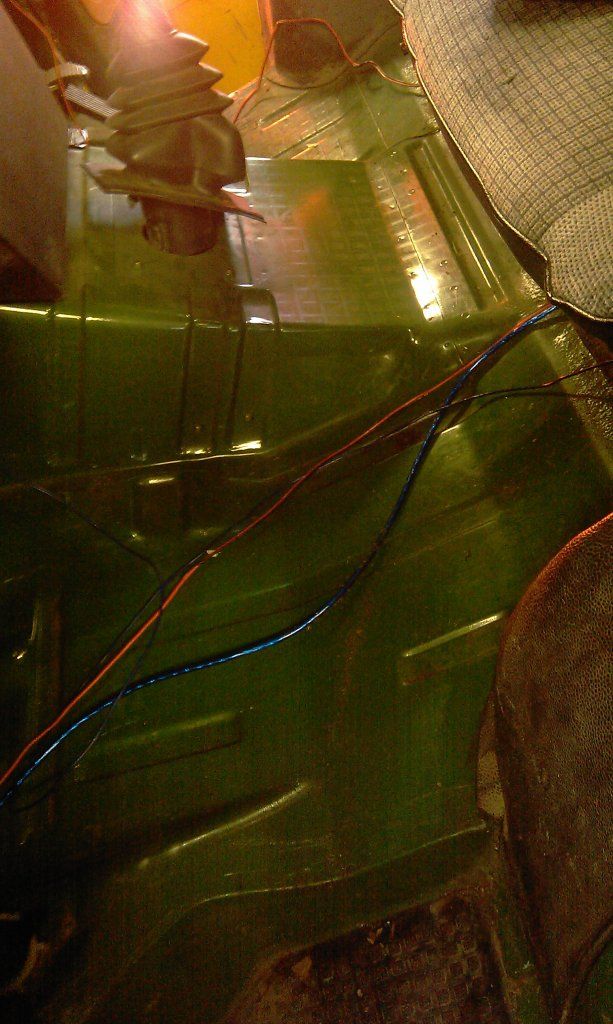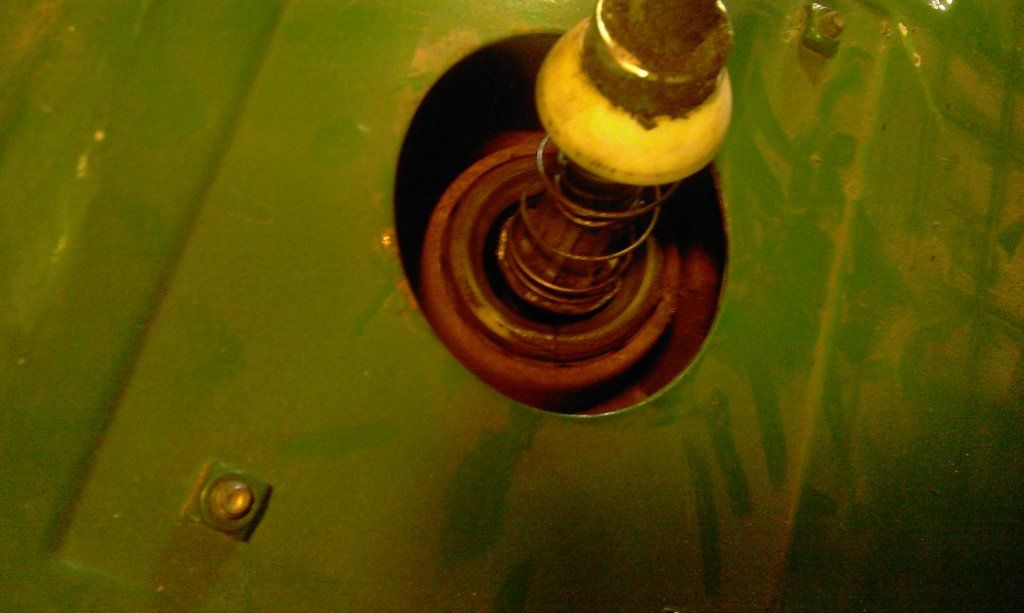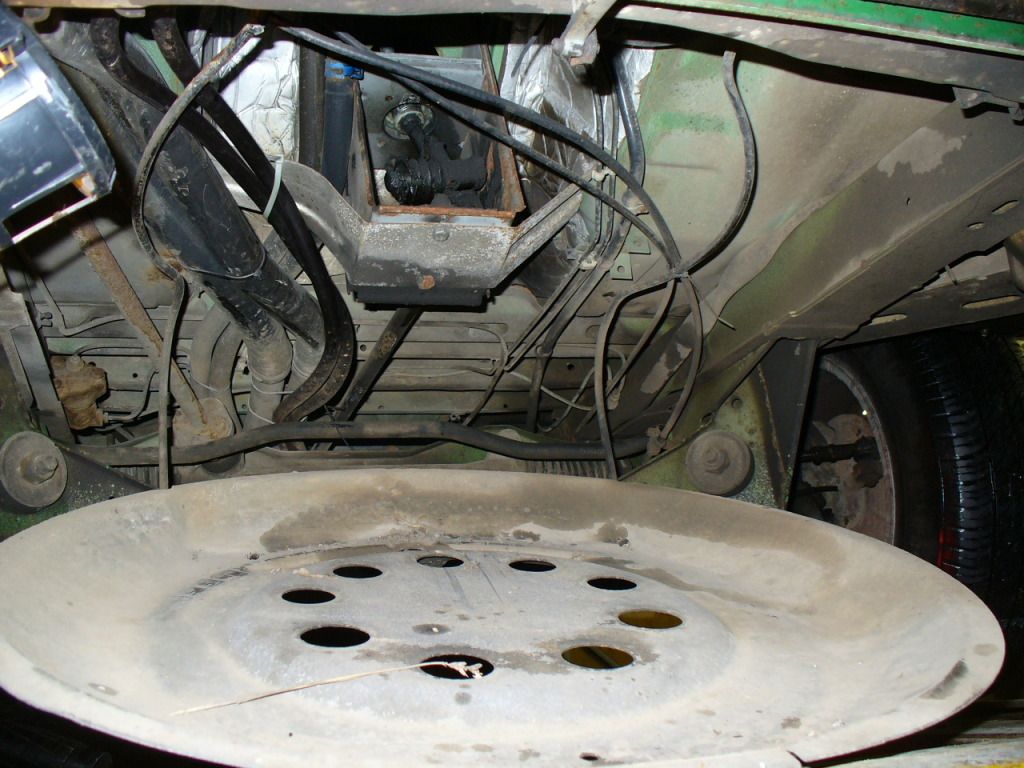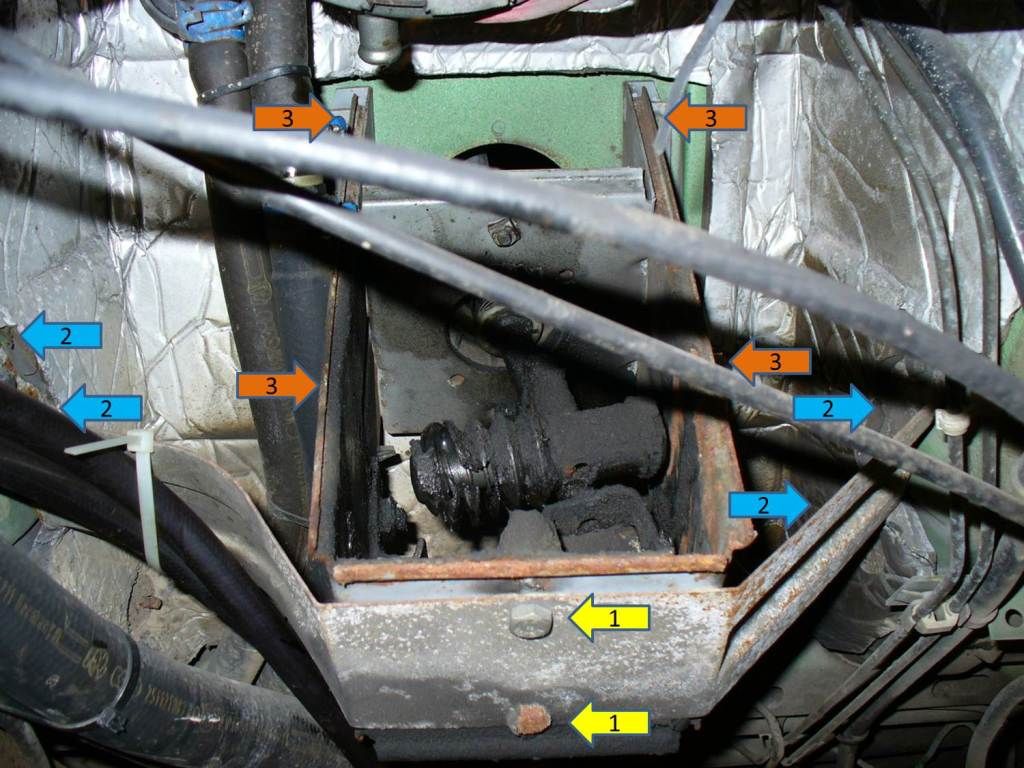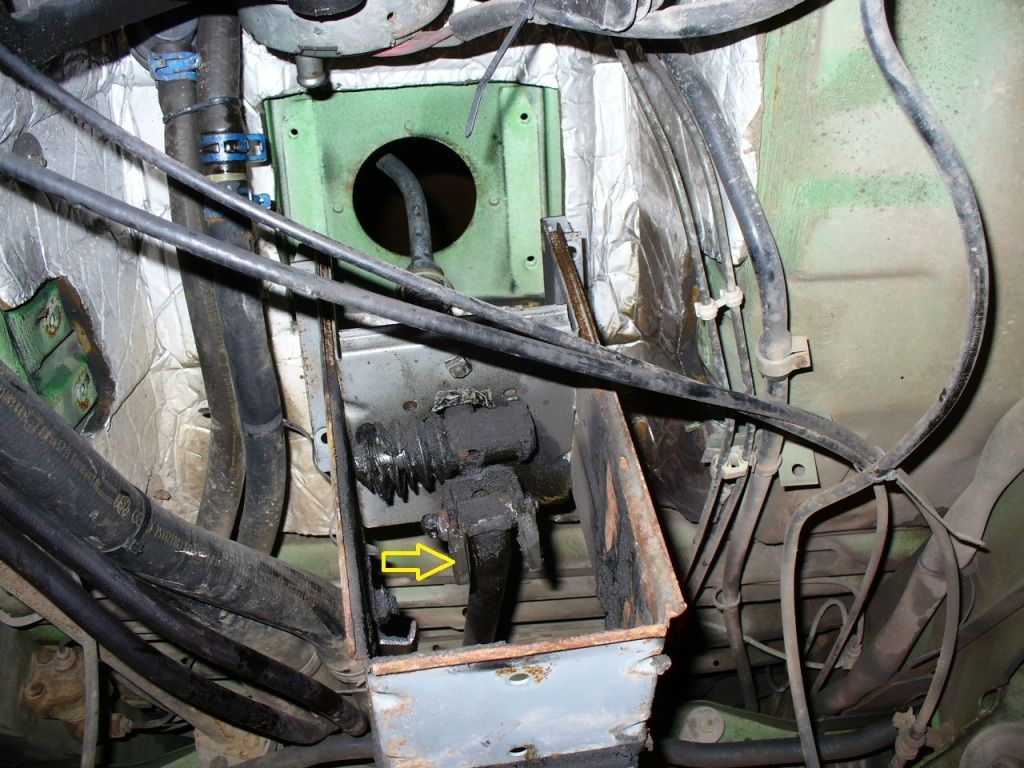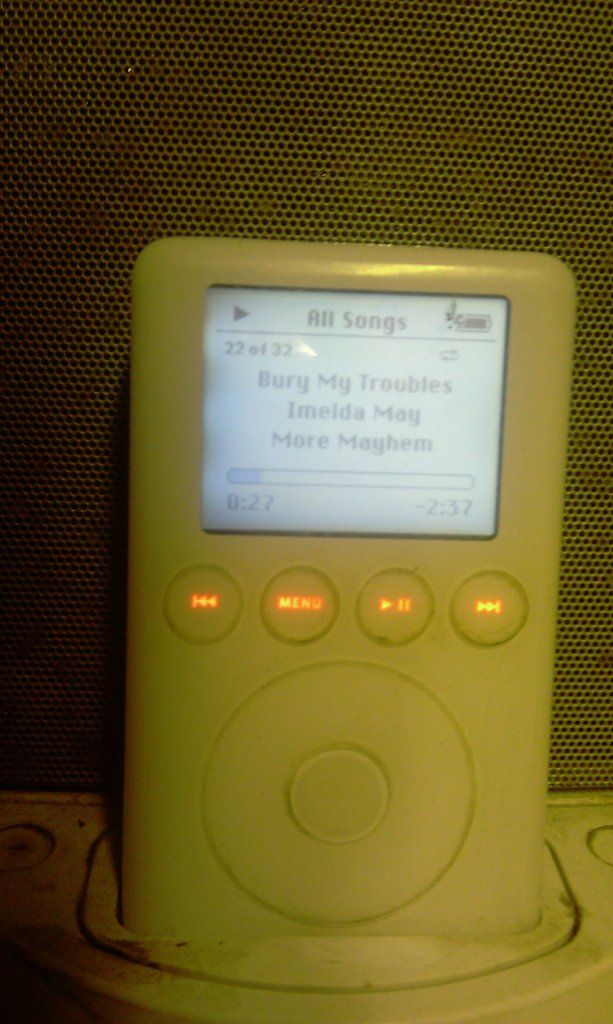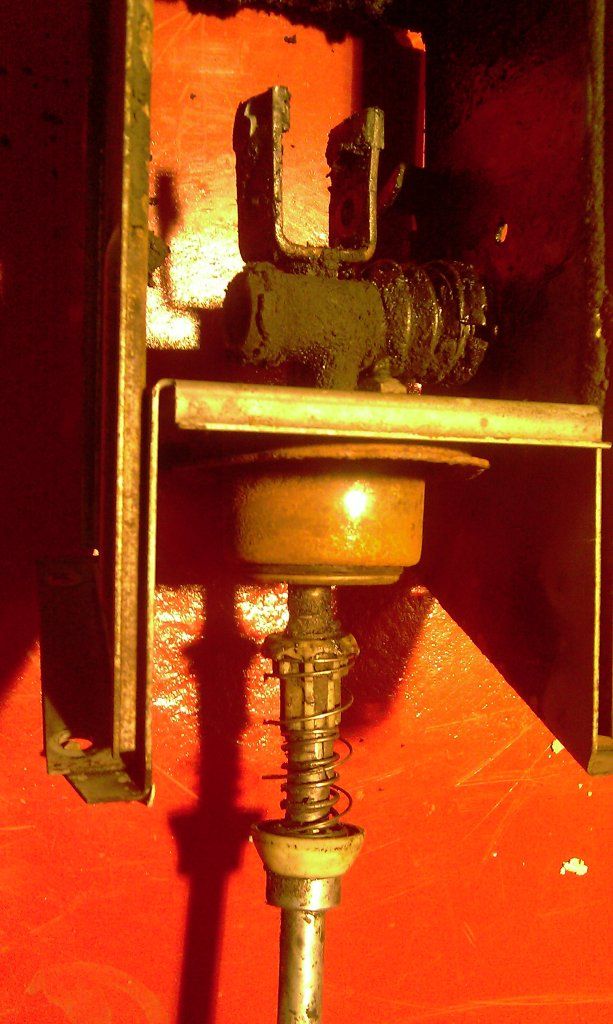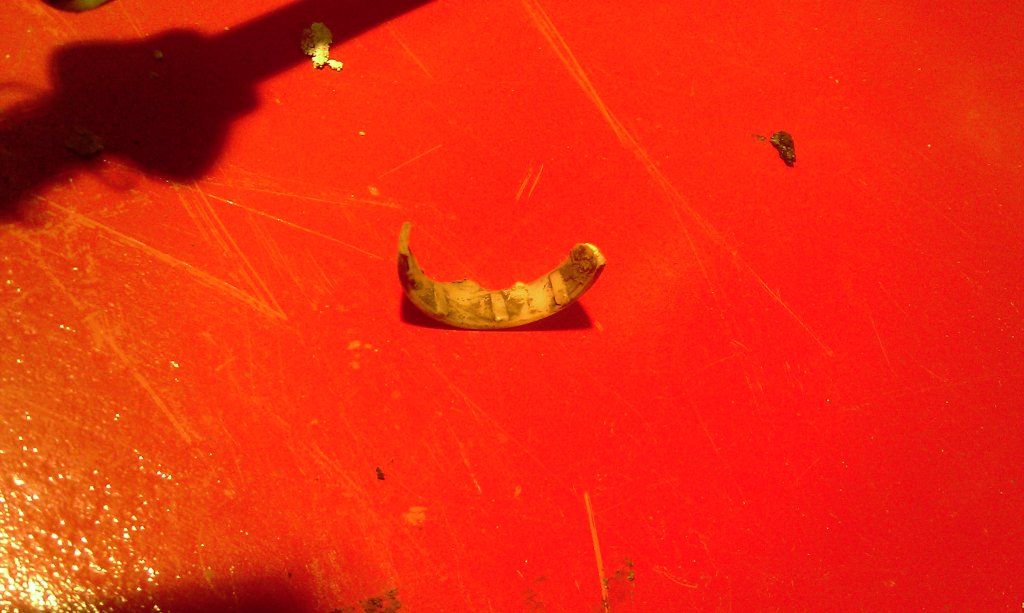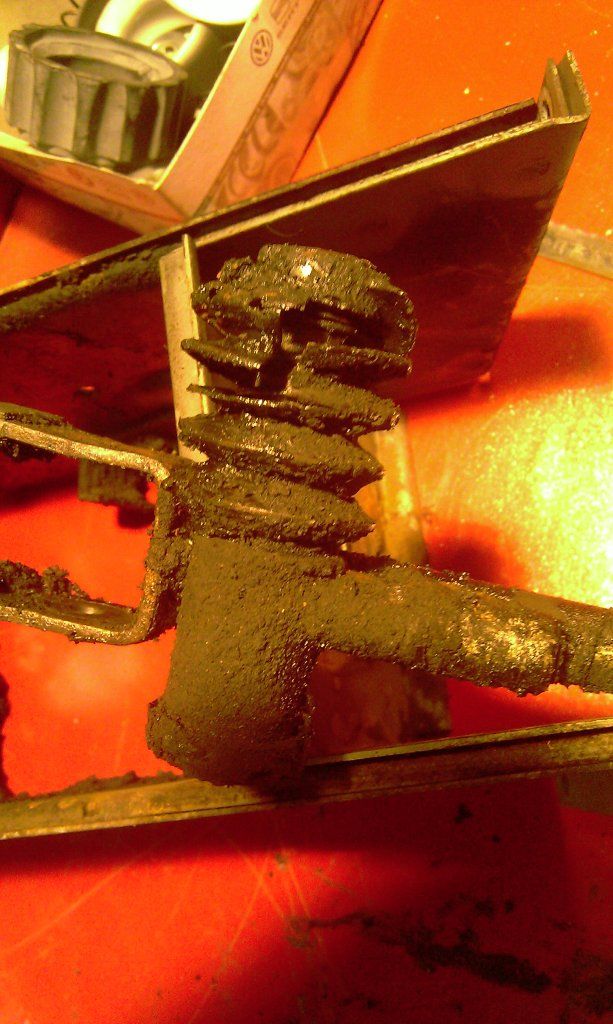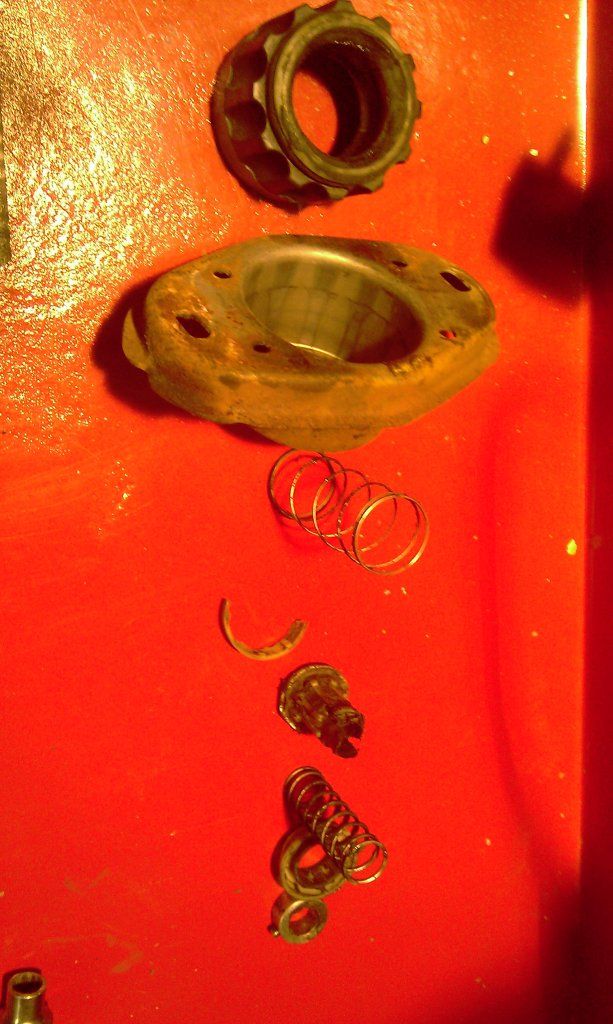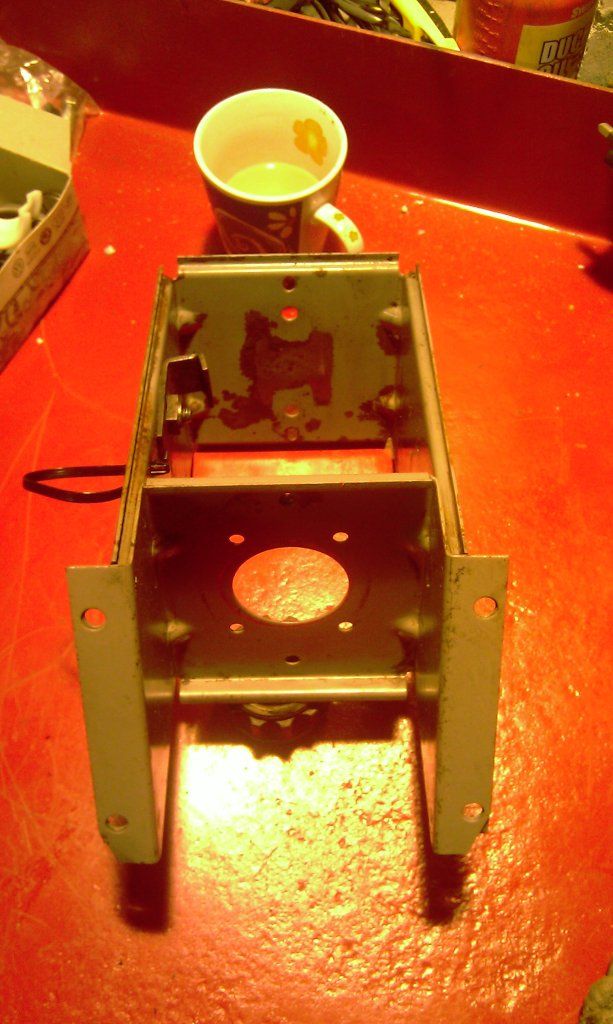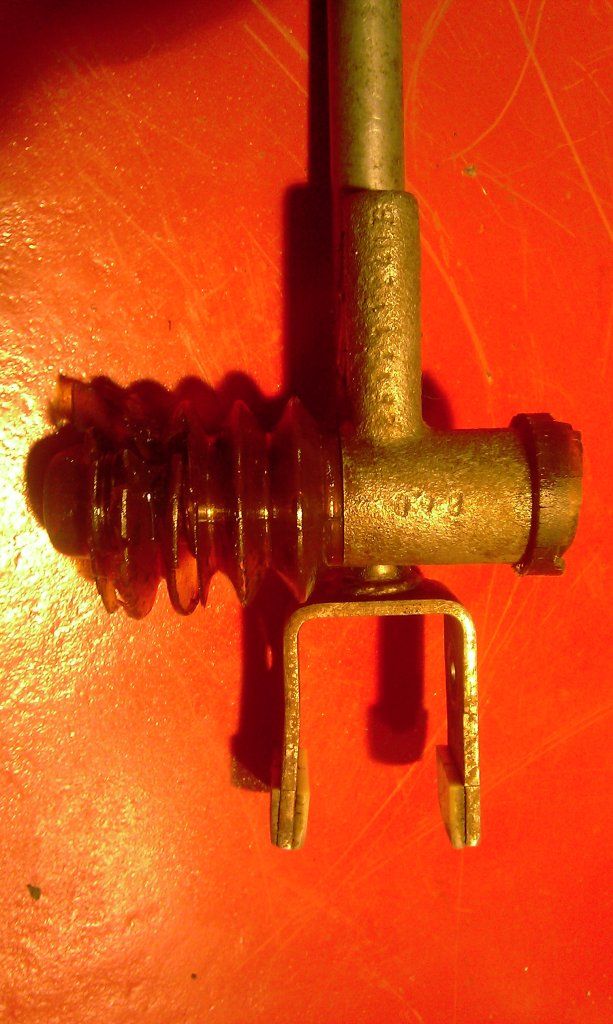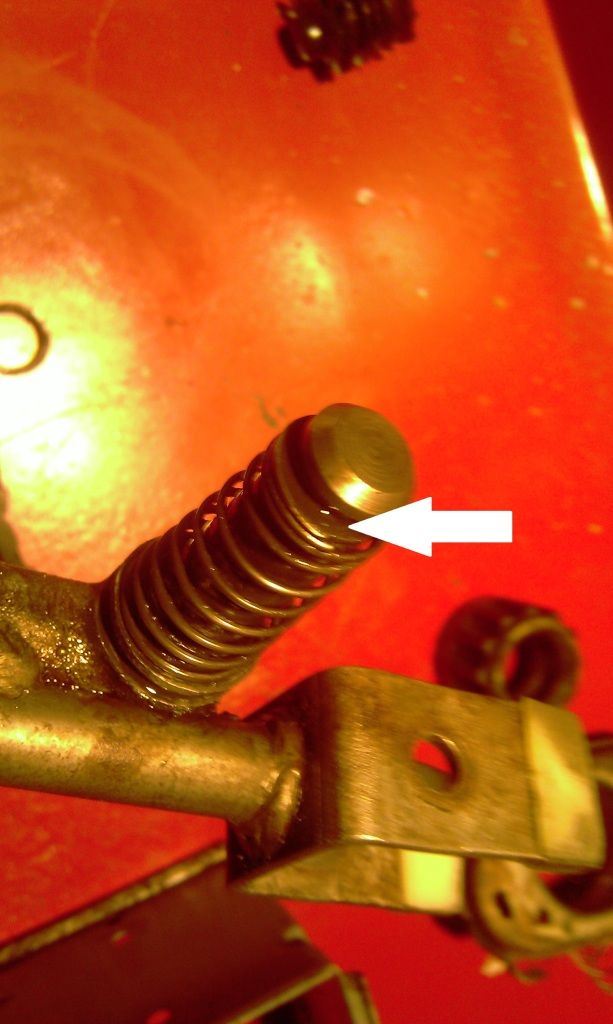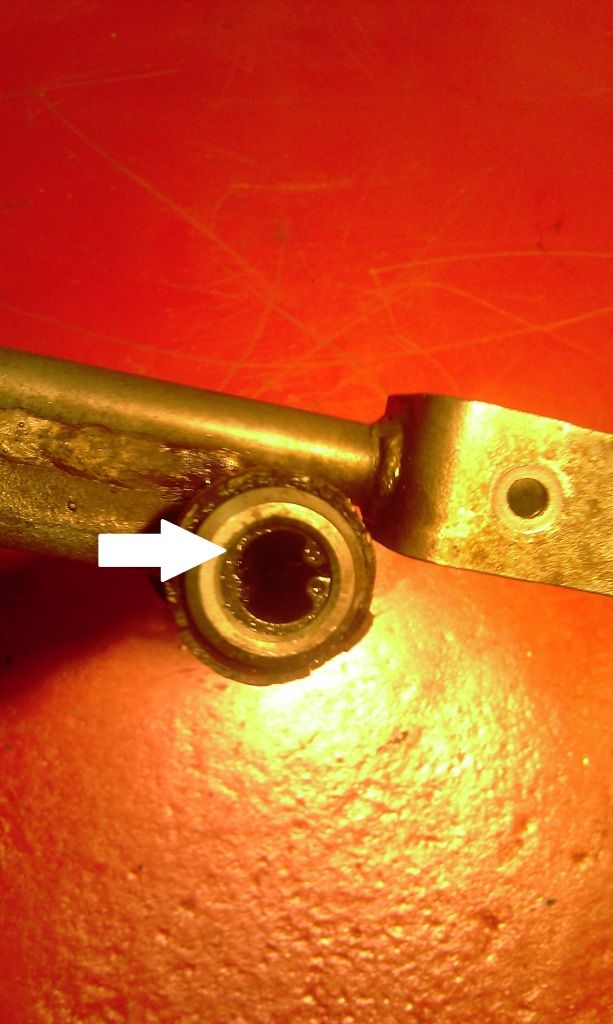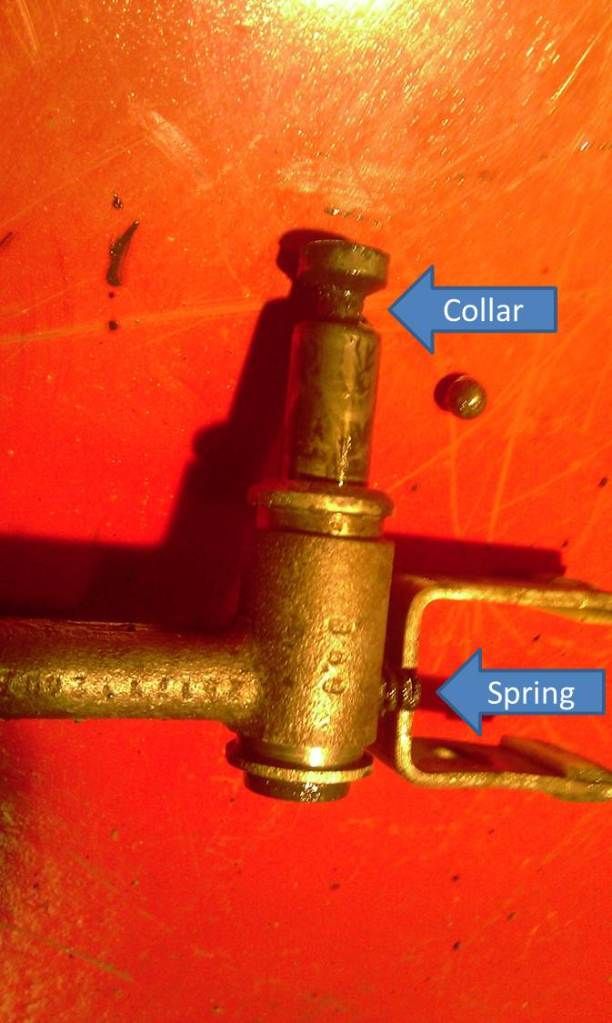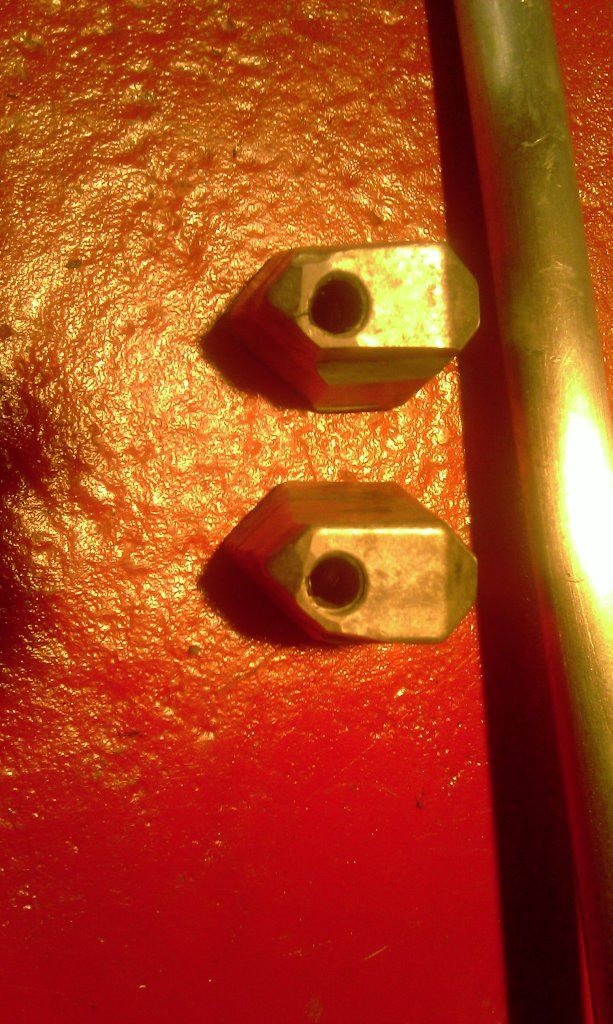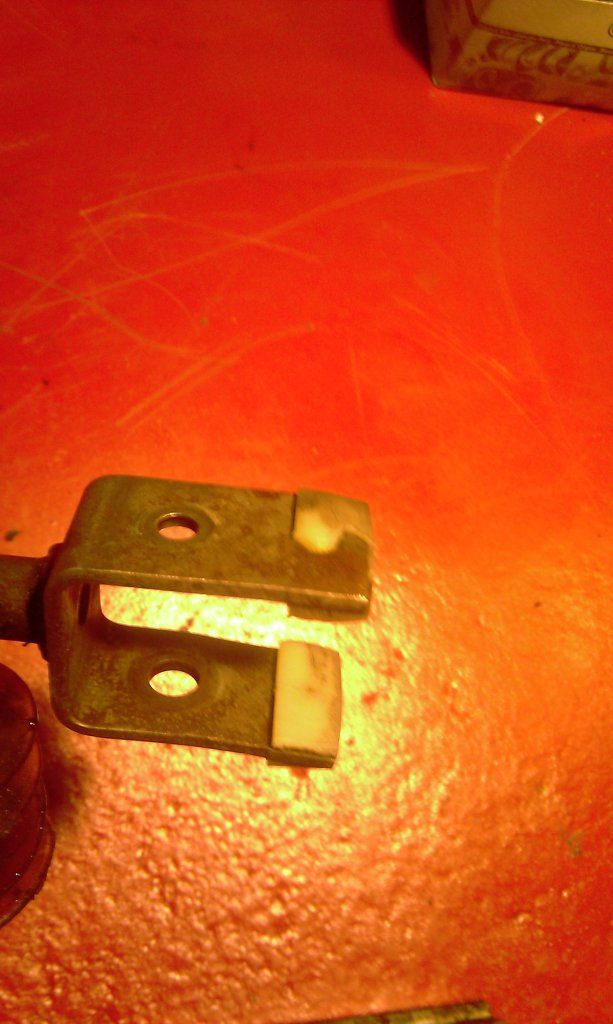This is what the new parts look like,
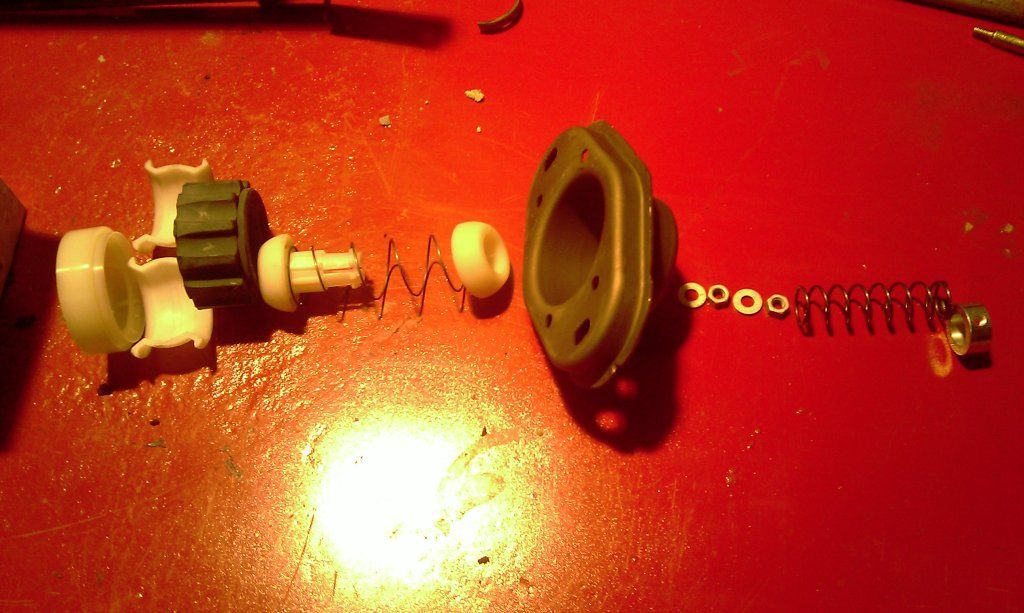
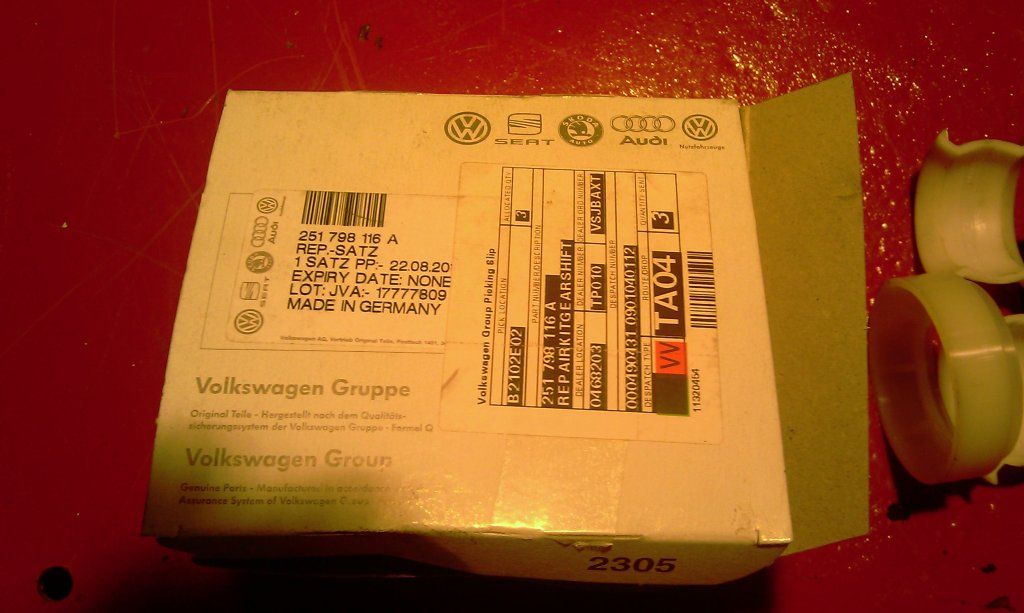
Genuine VW rebuild kit from Brickwerks.
So to answer my question from earlier – what was immediately obvious when looking at the old gear lever bearing assembly is that the upper and lower ball halfs have popped out of the bearing shells and the lower ball half is partially disintegrated.

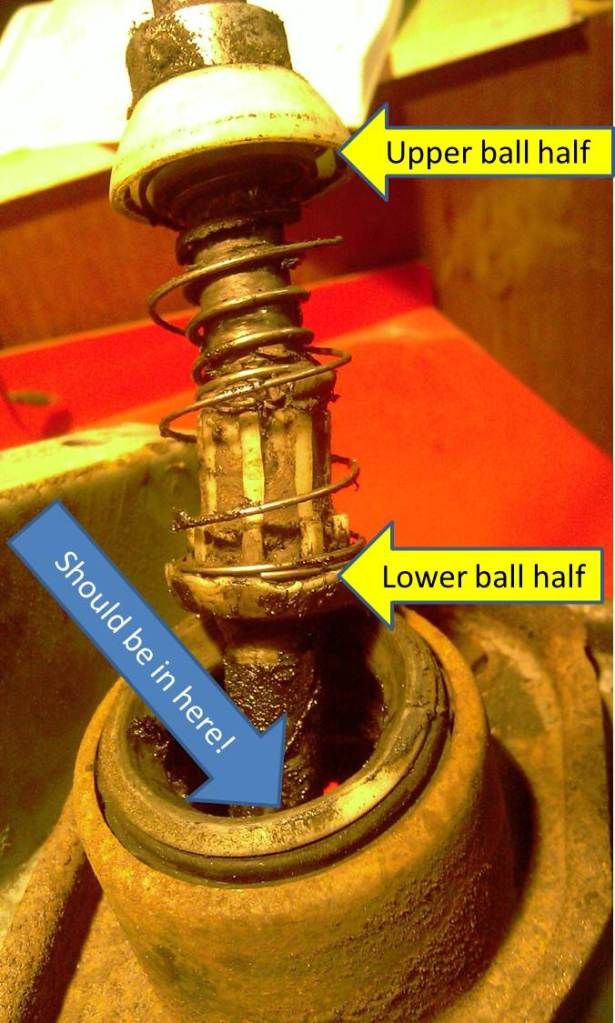
So in effect, the gear lever wasn’t running in the bearing at all, just connected to the shift lever. No wonder it moved around so much, and probably also exacerbated the wear on other components.

Now started assembling the new bearing. The two plastic shells are pushed into the rubber guide (looks like a big cog!). The lower ball half is then pushed into the shells, the spring fitted and the upper ball half pushed in as well. Lots of moly grease applied and the assembled bearing looks like this.
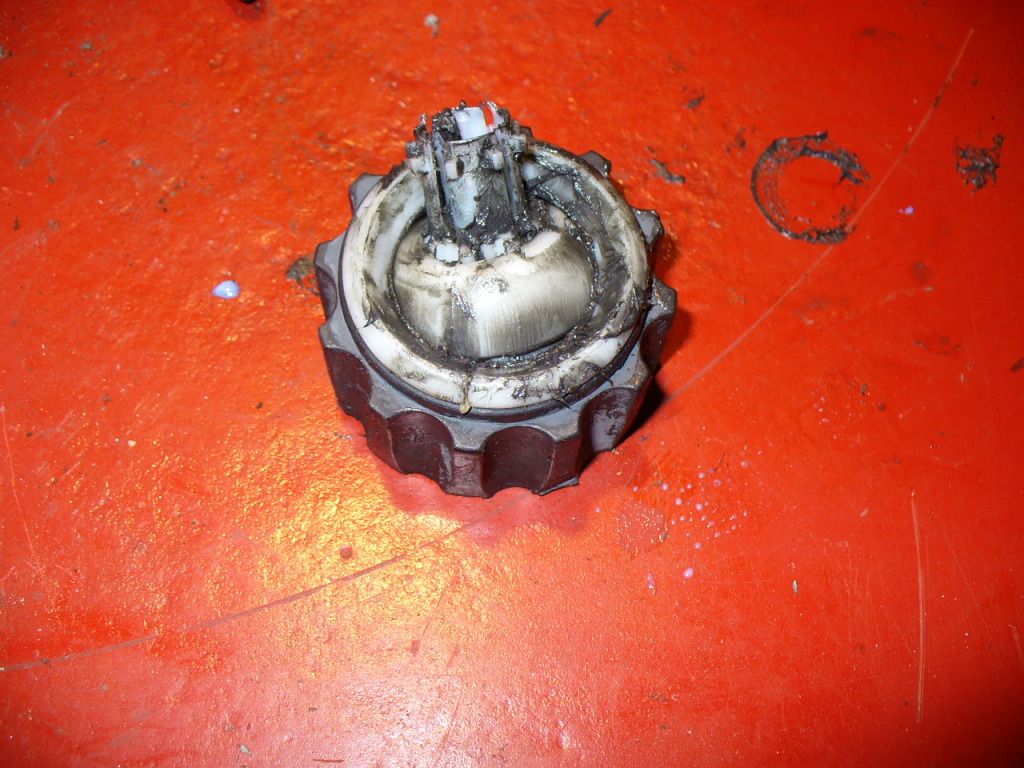
The whole bearing can then be pressed into the new metal housing, doesn’t need a lot of pressure, just tapped in.
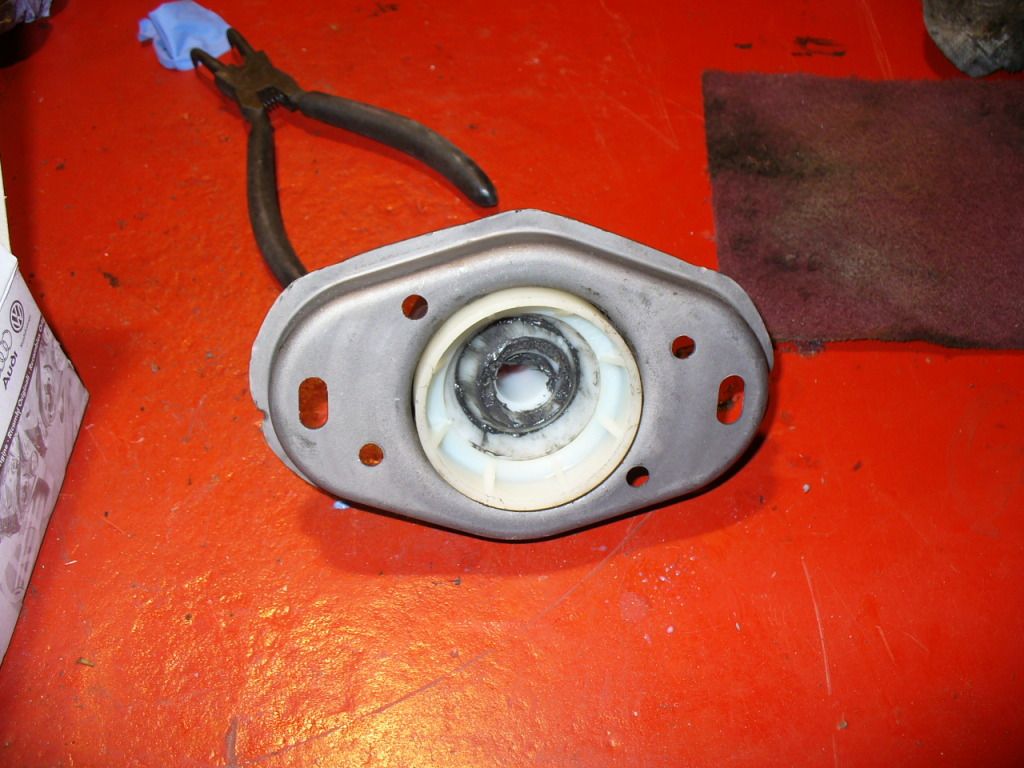
At this stage you could slide the bearing and housing onto the gear lever, put the final spring on and then lock in place with the bushing and grub screw (which screws into a recess on the gear lever so can only go in one place.)
If you did this your assembled unit would look like this.
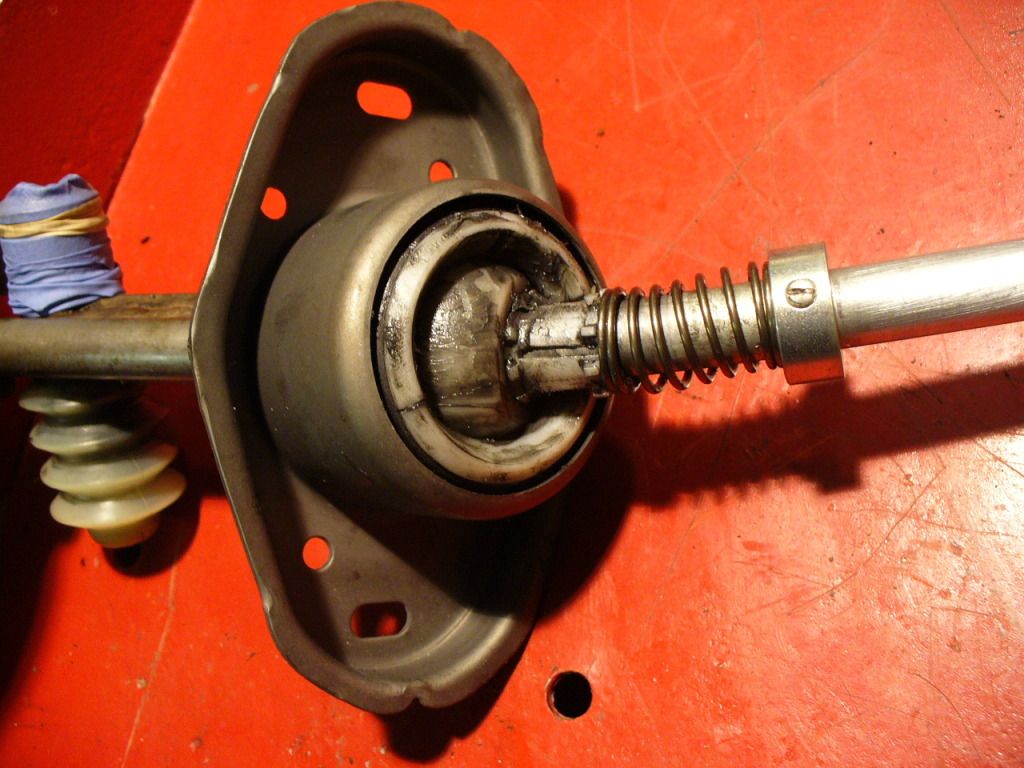
Good job eh? Apart from the fact I can’t now fit it into the shift mechanism housing.

You need to put the gear lever through the housing first and then put on the bearing housing etc.
Now moving to the end of the gear lever and the guide pin and spring. This was cleaned and re-assembled. The only tricky bit is depressing the spring and ball bearing whilst you push in the pin – not too difficult really though.
The original boot was split so a new on was filled with moly grease and then refitted.
On the other end of the guide pin assembly is a plastic cap that stops dirt entering the bushing and also acts as a buffer to protect the end of the assembly hitting the housing when rocking the gear lever from left to right in neutral. (if you move the stick from left to right as you would when checking you are in neutral and get a metallic clunk, then likely this cap is broken/missing like it was on mine).
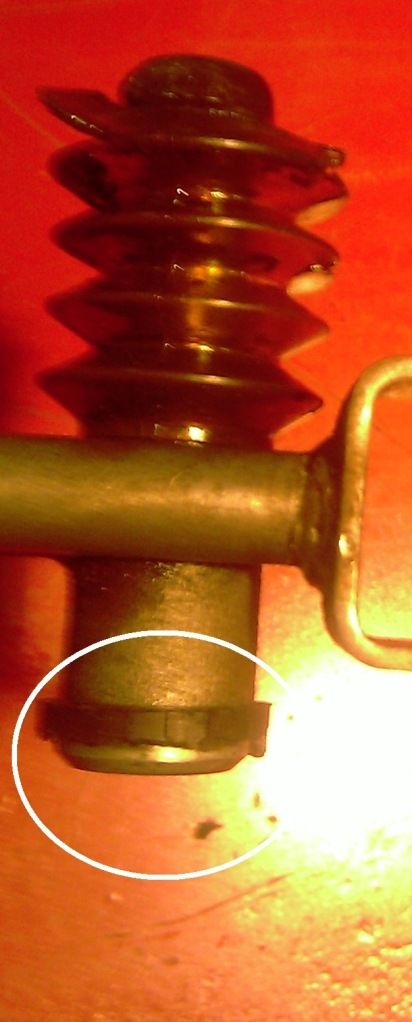
Now the problem is, this cap isn’t even listed as a part on ETOS and I can’t find one anywhere on the web! Anyone got any ideas?





For the moment I have improvised a cover to stop dirt getting in (couple of fingers from used gloves), but will have to make something more robust if can’t find the right part!
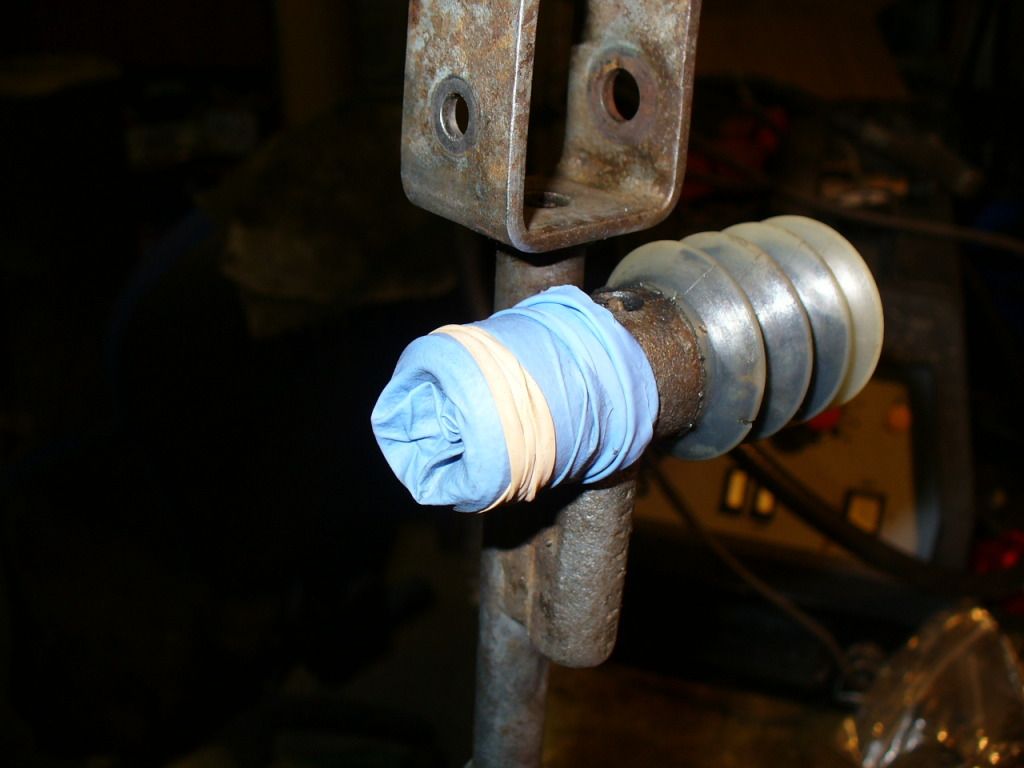
And then the whole unit assembled.
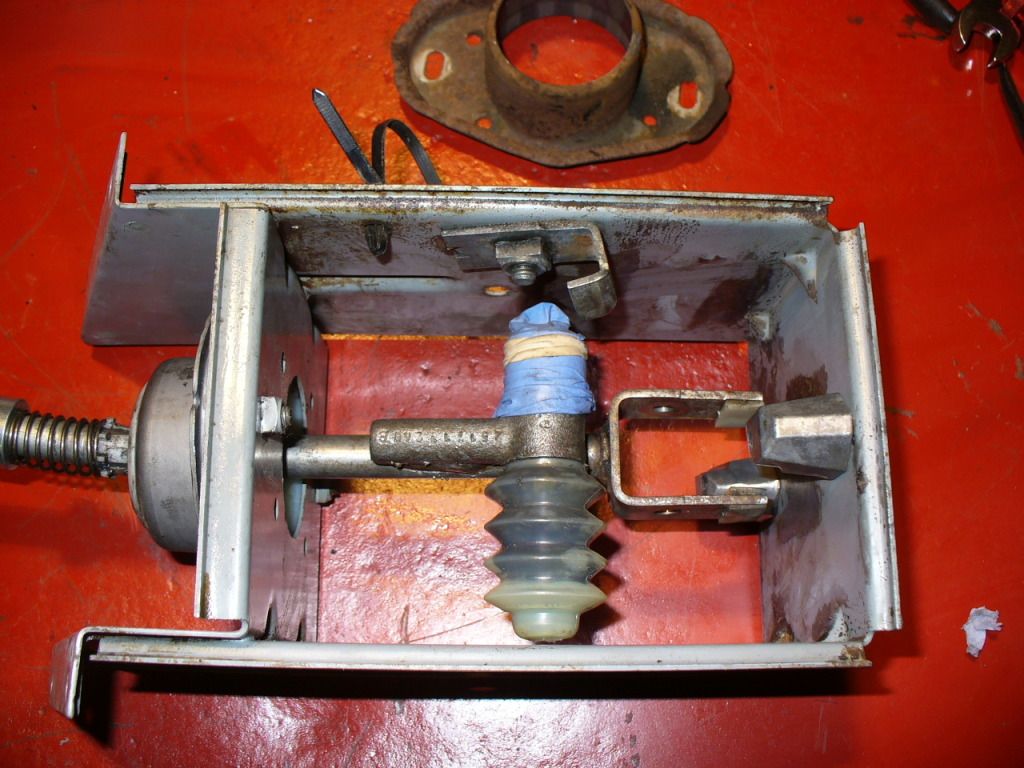
Next to replace the 2 bushes in the end of the shift rod. NOTE: these are included in the overhaul kit, I didn’t realise so ordered them separately as well. Old bushed can just be pryed out with a sharp screwdriver and then replaced.
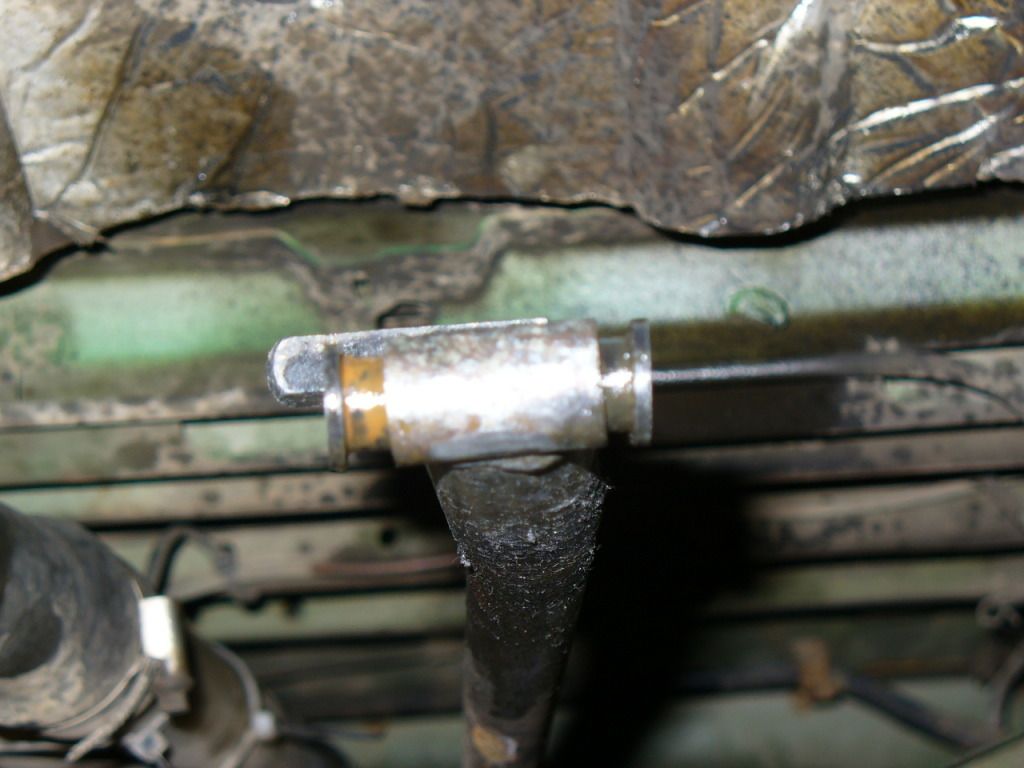
This is the reverse gear lock, bolts to the inside of the mechanism housing and stops you shifting straight into reverse.
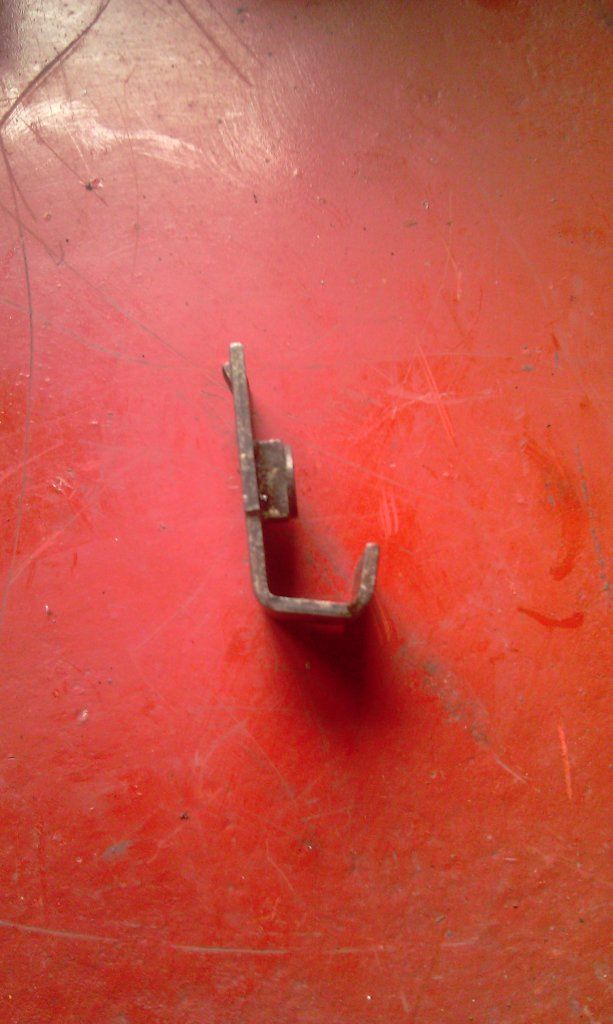
When you go for reverse the left movement pushes against the guide pin/spring and then you press the gear lever down, which pushes the square lug on the back of the shift lever underneath the reverse gear lock. Hence reverse can only be selected with a left AND down movement.
Before moving onto replacing the bushes in the rest of the shift mechanism I wanted to see what difference just overhauling the bearing and shift mechanism had made, so reassembled the housing,
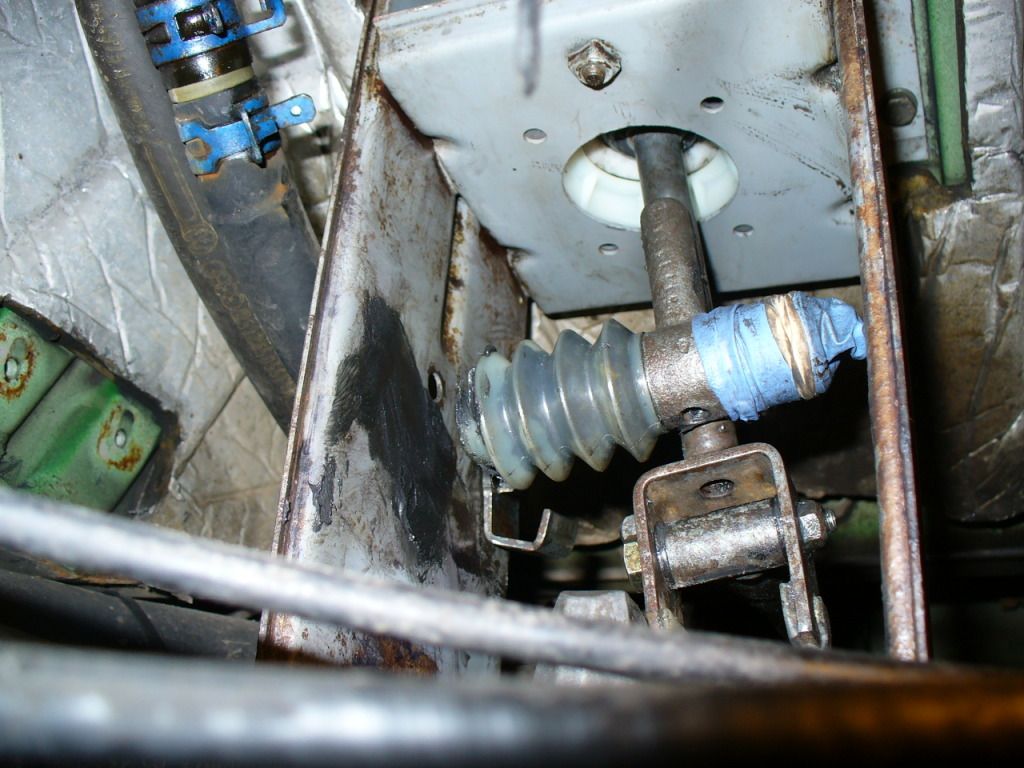
And then got in and tried it out.
WOW, no more spaghetti stirring.

Change is positive, you can tell where the gears are and I even get a satisfying “snick” when it comes out of reverse. 1st to 2nd changes are suddenly achievable.
And the quantitative measure: Lateral movement is reduced from 8” to 6.5”

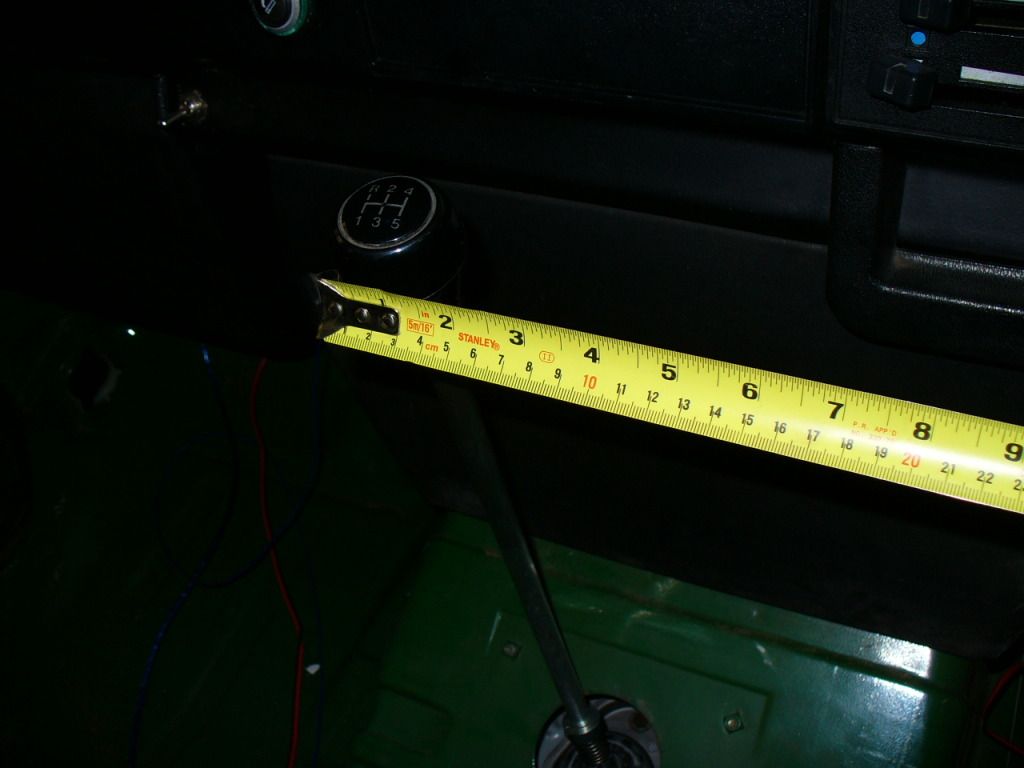
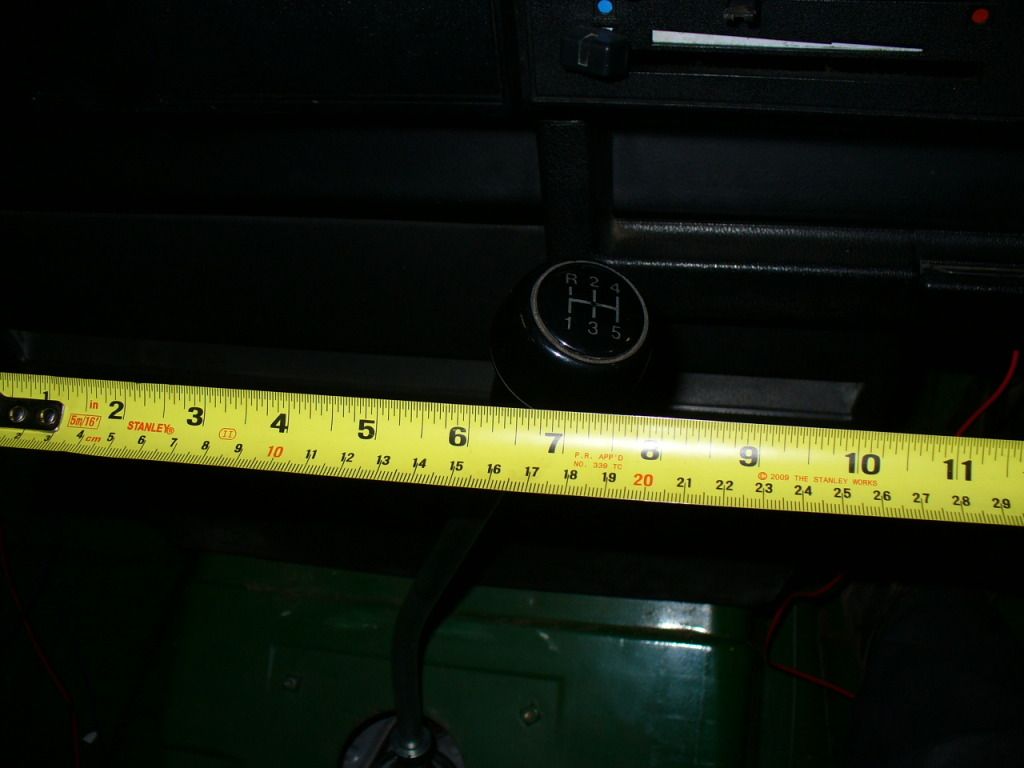
Vertical movement is pretty much the same, maybe ½” less, but that is understandable as I reckon this is controlled more by the selector shaft in the ‘box.
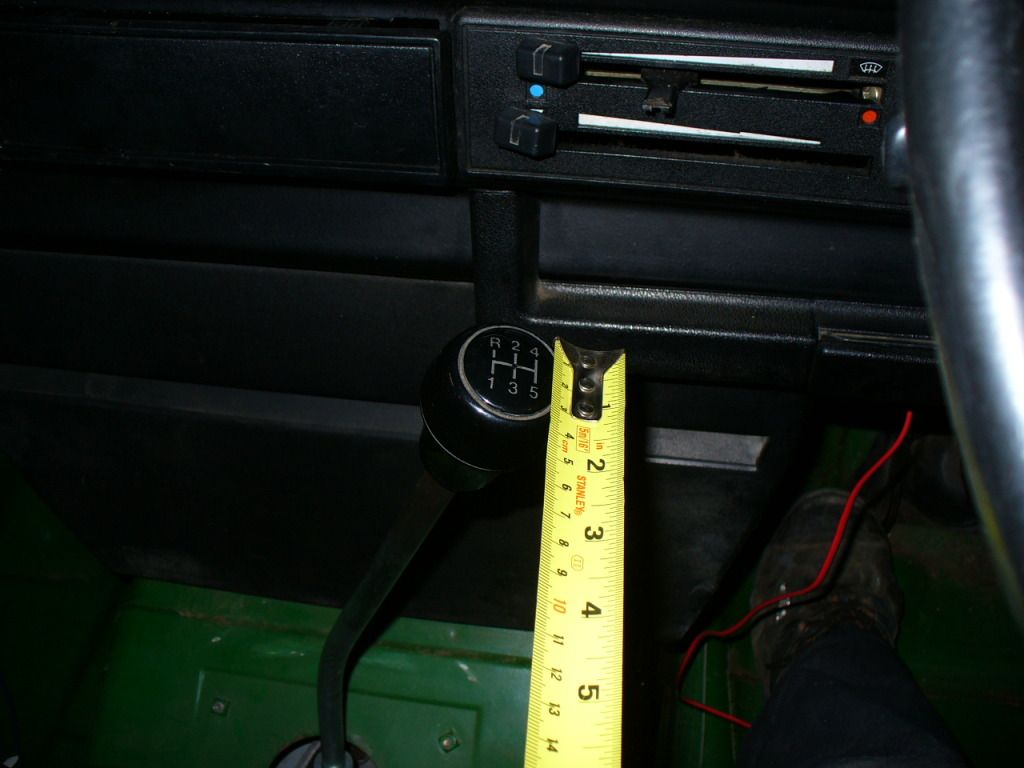
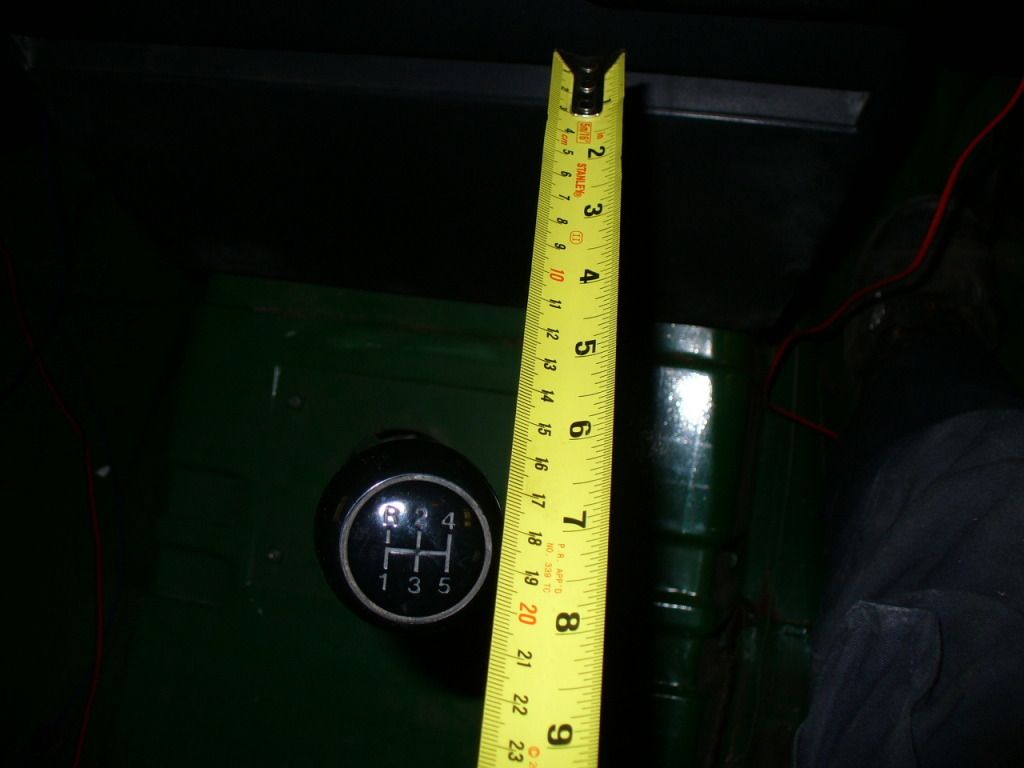
So, result really. I know I have lots of movement in the shift rod bushes still to sort out, but replacing the shift bearing has made a HUGE difference.
The van is driveable now, the gearshift is positive even though there is still a long throw – but this is a van not a sports car.
Next up is the rest of the shift rods etc.
MM
